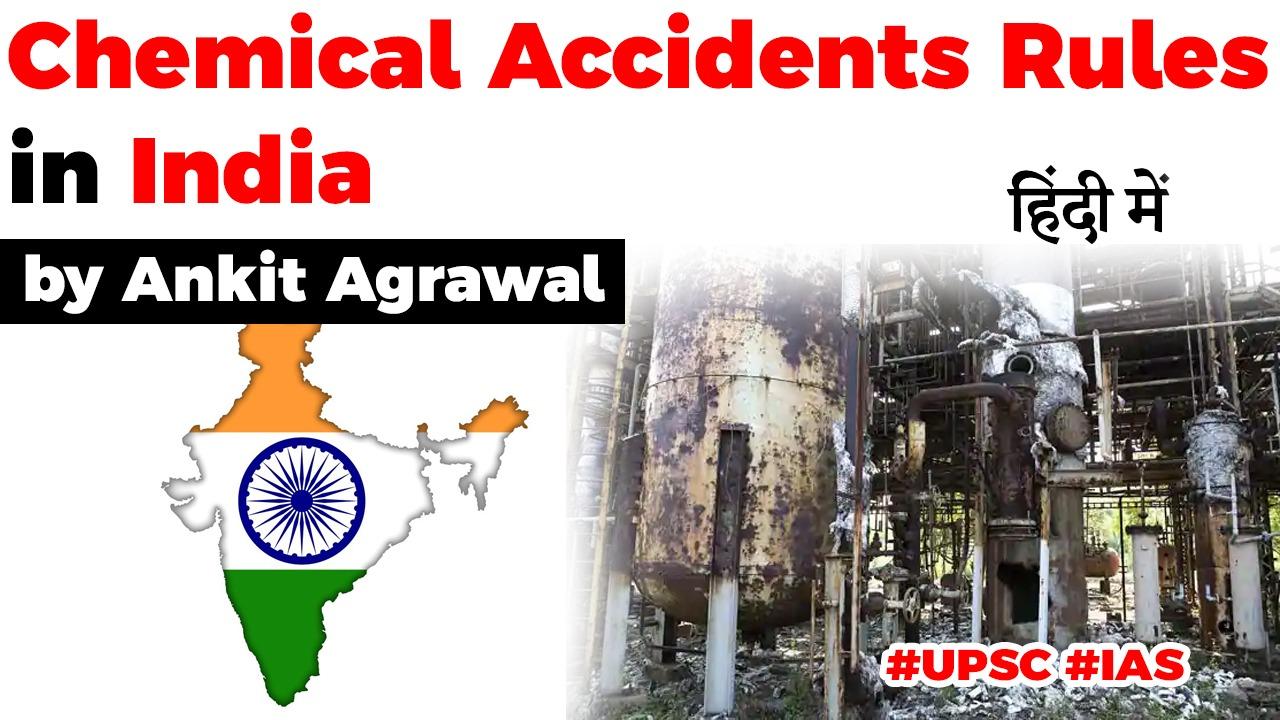Table of Contents

5 GAS LEAK ACCIDENTS
STEEL PLANT IN CHHATTISGARH
- In October 2018, 9 people died and 14 were injured in a blast at the Bhilai Steel Plant of SAIL in Chhattisgarh.
- The explosion took place in a gas pipeline.
- Authorities revealed that there had been uneven pressure in the gas pipeline for the past few days.
DELHI SCHOOL
- In May 2017, more than 300 students of Rani Jhansi Sarvodaya Kanya Vidyalaya in Tughlaqabad, Delhi, were hospitalised after a gas leak near their school.
- The authorities claimed that this was a chemical leakage at the customs area of Tughlaqabad depot.
COLD STORAGE IN KANPUR
- March 2017, 4 people were killed and 15 were injured in Shivrajpur, Kanpur, after an ammonia gas leak caused a powerful blast in a cold storage unit.
- The blast resulted in a building collapse, and more than 25 people were trapped.
- The facility was used to store potatoes.
GAIL PIPELINE IN ANDHRA PRADESH
- In June 2014, 15 people were killed and 18 were injured when a fire broke out in Andhra Pradesh’s Godavari district after gas leak from a pipeline owned by GAIL.
- The fire spread over a 1-km radius, and people rushed out of their houses that were engulfed in flames.
BHOPAL GAS TRAGEDY
- The Bhopal gas tragedy is called the ‘worst industrial accident’ in history.
- In December 1984, over 45 tonnes of toxic methyl isocyanate gas leaked from an insecticide plant.
- Owned by American firm Union Carbide Corporation, killing between 15,000 and 20,000 people in the city.
- Over half a million survivors suffered from respiratory problems, irritation in the eye, and blindness.
- Later, investigations revealed that the leakage had occurred due to substandard safety procedures at the understaffed
CHEMICAL ACCIDENT RULES IN INDIA
- Following the 1984 Bhopal gas disaster,
- To regulate the manufacturing, use, and handling of hazardous chemicals, MoEF notified two sets of rules –
- Manufacture, Storage and Import of Hazardous Chemicals (MSIHC) Rules, 1989.
- Chemical Accidents (Emergency Planning, Preparedness, and Response), (CAEPPR) Rules, 1996.
MANUFACTURE, STORAGE AND IMPORT OF HAZARDOUS CHEMICALS (MSIHC) RULES, 1989
- The main objectives of the MSIHC Rules are-
- To prevent major chemical accidents arising from industrial activities and
- Limit the effects of chemical (industrial) accidents.
- In addition, as prescribed by the MSIHC Rules, 1989,
- The occupiers of Major Accident Hazard (MAH) units are responsible for the preparation of on-site Emergency Plans.
- While the Chief Inspector of Factories (CIFs) in consultation with district authorities are required to prepare off-site emergency plans as well.
CHEMICAL ACCIDENTS (EMERGENCY PLANNING, PREPAREDNESS, AND RESPONSE), (CAEPPR) RULES, 1996
- The CAEPPR Rules, 1996 provide-
- The statutory backup for crisis management set-up and
- Prescribe criteria for identification of Major Accident Hazard (MAH) installations.
- All districts with such installations are required to establish crisis management groups.
UPGRADATION OF RULES
- In 2016, MoEF proposed to upgrade the rules to keep pace with time.
- A draft amendment to rules was floated for stakeholder
- But the rules could not be finalized.

- IS STYRENE FOUND NATURALLY IN FOODS LIKE FRUITS AND VEGETABLES?
Latest Burning Issues | Free PDF






















 WhatsApp
WhatsApp